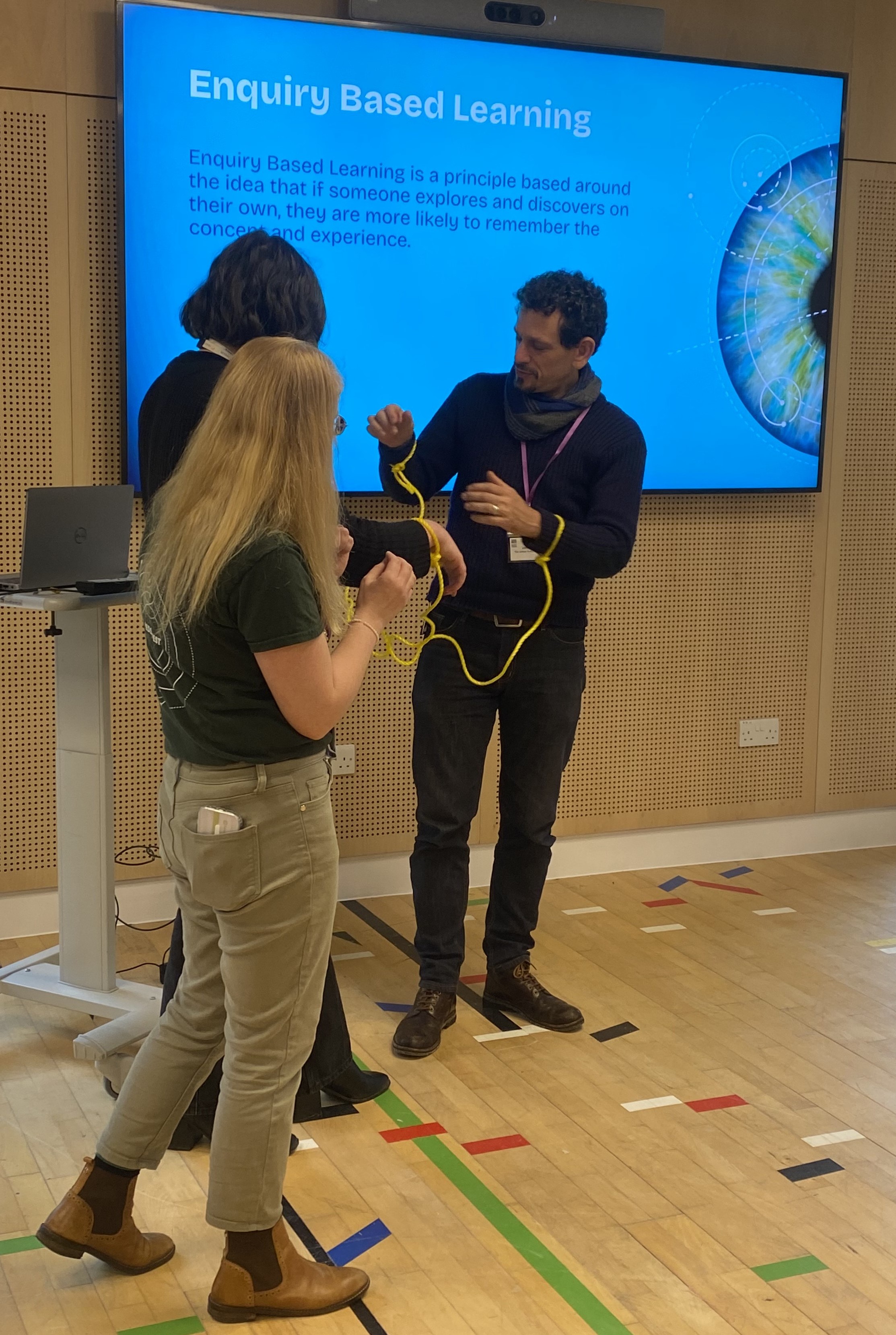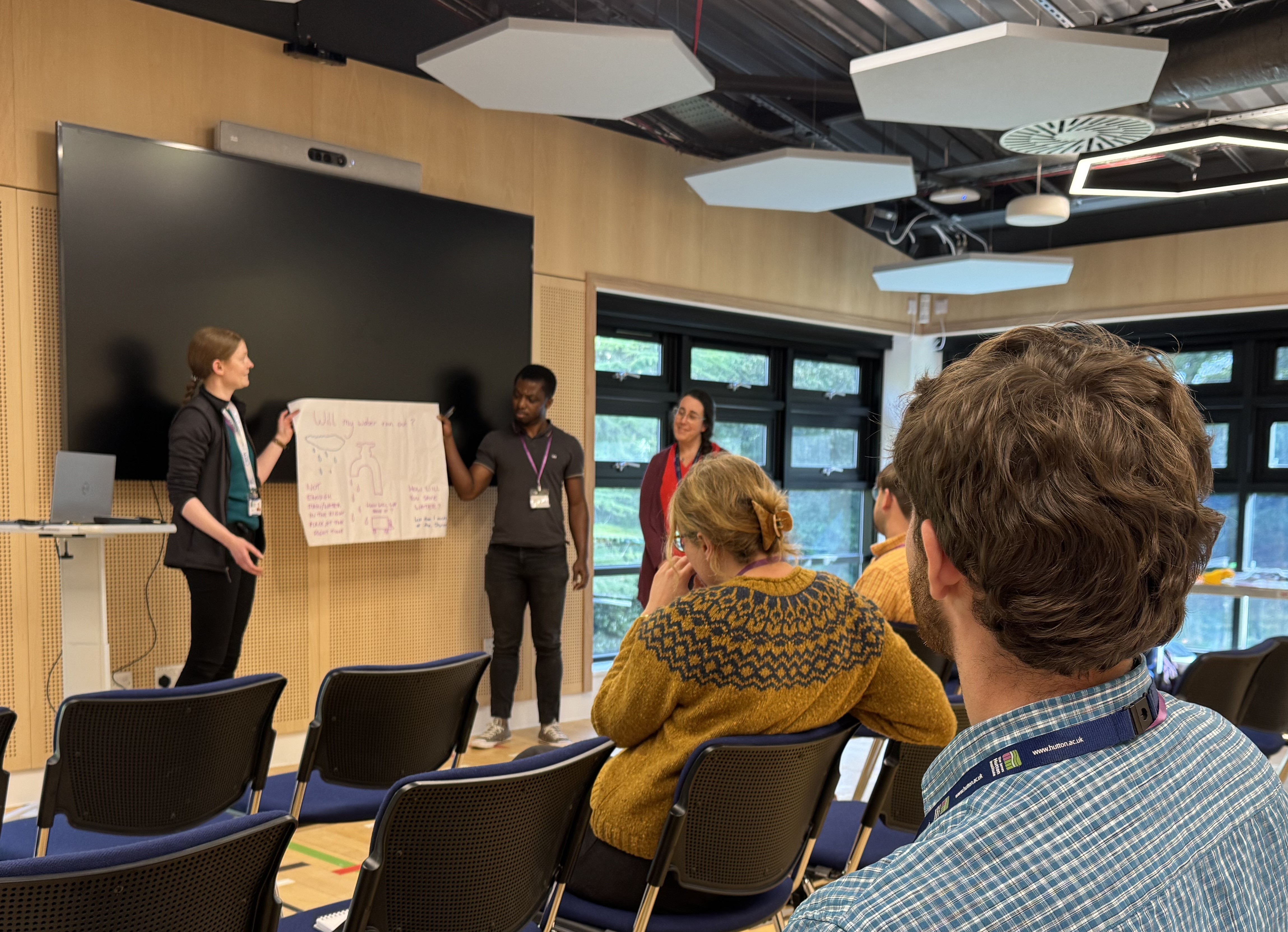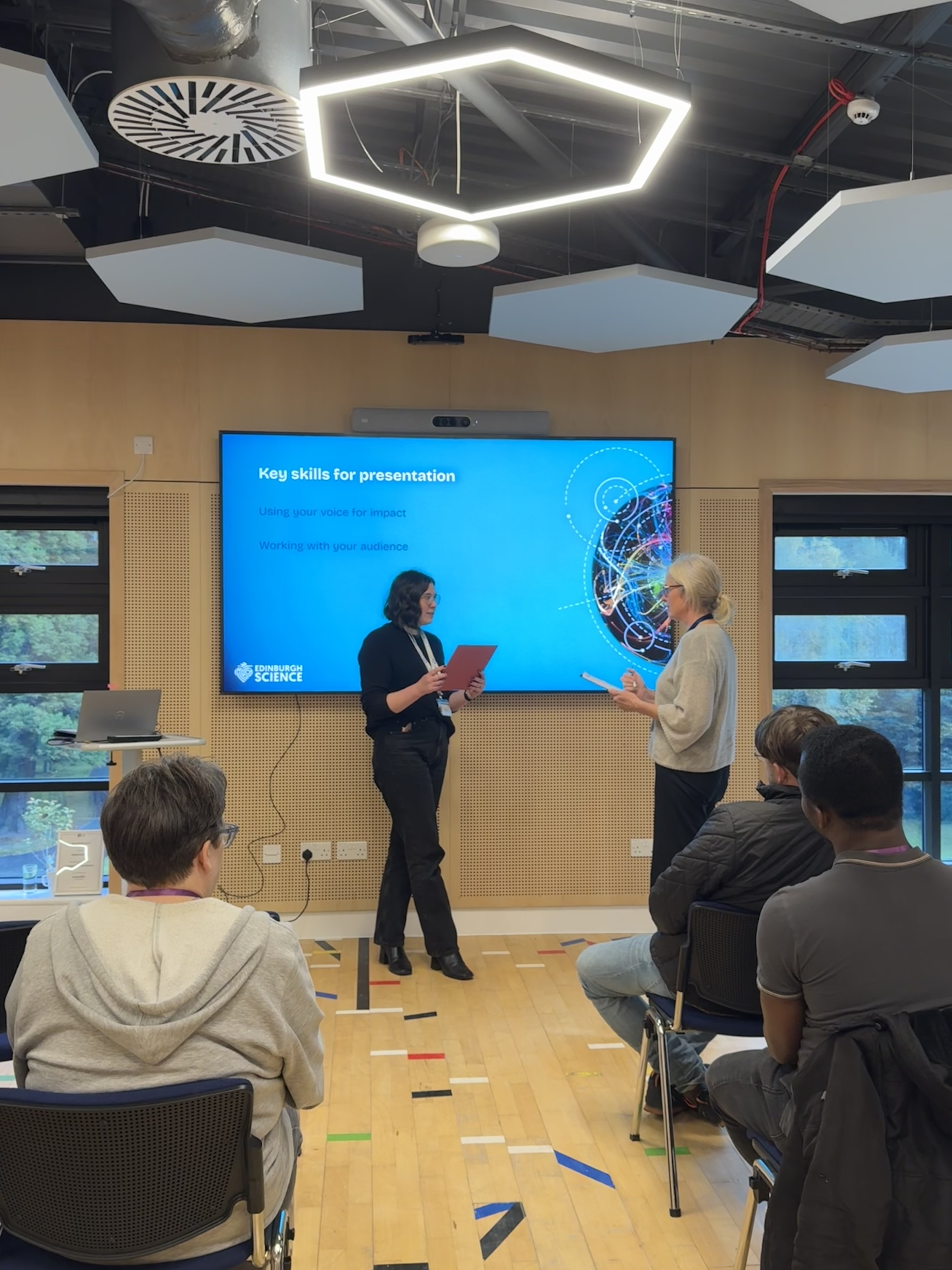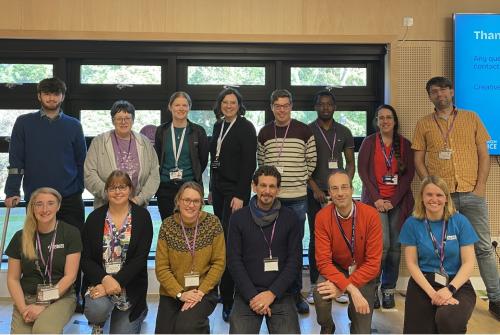As I was tied in knots with the person next to me, I started to wonder whether I was at a contortionist’s training exercise, rather than learning science communication skills. But as Dr Alexis Walter (also taking part in the training) and I tried to untangle ourselves, it quickly became clear there was a point to the slightly unusual exercise given to us by Edinburgh Science - communication only works when both sides are listening, adapting, and finding common ground.

Dr Alexis Walter and I in our communication and contortion exercise. Dr Walter is a senior scientist who spends his time in a laboratory filled with the wee of his James Hutton Institute colleagues in the pursuit of sustainable and self-lit sanitation systems.
The fun and creatively challenging tasks given to us by our communication trainers, Jennifer Rodger-Casebow and Ali Birkett from Edinburgh Science, were what made our session so engaging and impactful. Colleagues from across SEFARI (The Rowett Institute, SRUC (Scotland’s Rural College) and The James Hutton Institute) and another Centre of Expertise (CREW – The Centre of Expertise for Waters) gathered at the Hutton for a lively session focussed on how to communicate complex research clearly and confidently to non-specialist audiences.

Dr Nikki Dodd (CREW), Dr Ernest Afriyie (Hutton) and Dr Diana Valero (Hutton) doing their presentation on water scarcity aimed at young children.
Through a mixture of fast-paced challenges we explored how body language, tone and storytelling can transform even the most technical science into something memorable. In one activity, Jenny Fyall (the SEFARI Gateway Centre Manager) and I had to draw a mystery image, one giving instructions, the other drawing, which turned out to be a brilliant test of clarity and active listening. In another, we gave short, improvised talks on topics we knew nothing about, using random props. It was chaotic, funny, and surprisingly effective at pushing us out of our academic comfort zones.

Jenny Fyall and Dr Amy Cooper proudly displaying our drawings – if only we’d checked that we were holding our paper the same way first!
By the end of the day, we’d learned several key lessons worth sharing:
🟠 Know your audience – Whether you’re talking to policymakers, farmers, or school pupils, start from their world, not yours.
🟠 Lose the jargon – If you have to use a technical term, explain it once, simply. Avoid overusing acronyms.
🟠 Tell a story – People remember narratives, not numbers.
🟠 Be confident, not perfect – A relaxed, human delivery connects far better than flawless slides.
🟠 Keep it short – Whether it’s a presentation or a social media clip, aim for one clear message that lands.
For me, the biggest takeaway was that good communication isn’t just about simplifying science, it’s about making people care. By connecting research to real-world challenges and human stories, we can show not just what we do, but why it matters.
With renewed enthusiasm (and thankfully no more string), we at SEFARI Gateway are ready to put these lessons into practice.
Blog written by Amy Cooper, SEFARI Communications and Engagement Officer
